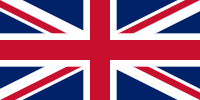The Canadas
 | ||||||||||||||||||||||||||||||||||||||||||||||||
British North America
Column-generating template familiesThe templates listed here are not interchangeable. For example, using {{col-float}} with {{col-end}} instead of {{col-float-end}} would leave a
{| | || |- |} used to create tables? If not, special templates that produce these elements (such as {{(!}}, {{!}}, {{!!}}, {{!-}}, {{!)}})—or HTML tags (<table>...</table>, <tr>...</tr>, etc.)—need to be used instead. | ||||||||||||||||||||||||||||||||||||||||||||||||
|---|---|---|---|---|---|---|---|---|---|---|---|---|---|---|---|---|---|---|---|---|---|---|---|---|---|---|---|---|---|---|---|---|---|---|---|---|---|---|---|---|---|---|---|---|---|---|---|---|
 The Canadas, Upper Canada (orange) and Lower Canada prior to 1809 (green) | ||||||||||||||||||||||||||||||||||||||||||||||||
The Canadas is the collective name for Upper Canada and Lower Canada, two British historical colonies in present-day Canada.[1] They were both created by the Constitutional Act of 1791 and abolished in 1841 with the union of Upper and Lower Canada.
Their names reflected their positions relative to the headwaters of the St. Lawrence River, the same relationship as between Upper Egypt and Lower Egypt:
- Lower Canada covered the south-eastern portion of the modern-day Province of Quebec, Canada, and (until 1809) the Labrador region of the modern-day Province of Newfoundland and Labrador.[1]
- Upper Canada covered what is now the southern portion of the Province of Ontario, and the lands bordering Georgian Bay and Lake Superior.[1]
- The northern part of the current provinces of Ontario and Quebec was at that time part of Rupert's Land.
History
The British colony of the Province of Quebec was divided by the Constitutional Act of 1791 into two separate provinces, with the Ottawa River forming a part of the border.
The creation of Upper Canada was in response to the desire expressed by recently arrived United Empire Loyalist settlers for British institutions and laws, especially British laws of land tenure.
The political structure of the colonies was changed after Lord Durham's 1838 Report on the Affairs of British North America recommended they be merged into a single colonial province.
Lower Canada, Upper Canada and their legislatures were abolished by the British Act of Union 1840 of July 23, 1840 (which came into force in early 1841) and united as one political entity, the Province of Canada.
See also
References
- ^ a b c Wesley B. Turner (4 July 2011). The Astonishing General: The Life and Legacy of Sir Isaac Brock. Dundurn Press Ltd. p. 12. ISBN 978-1-55488-777-4.
